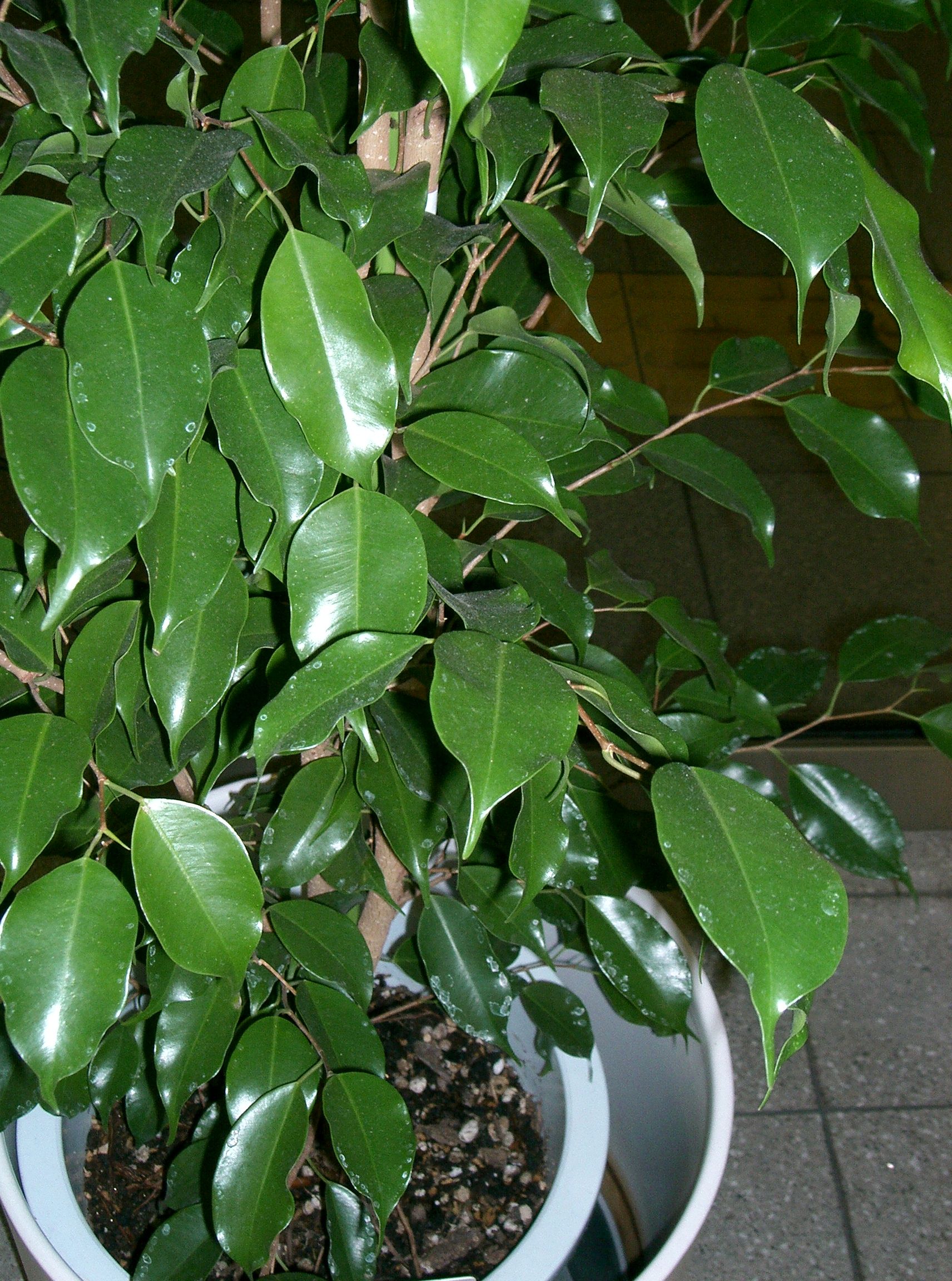- Ficus benjamina
regnum =Plant ae
divisio =Magnoliophyta
classis =Magnoliopsida
ordo =Urticales
familia =Moraceae
genus = "Ficus "
species = "F. benjamina"
binomial = "Ficus benjamina"
binomial_authority = L. [cite web
url=http://www.ars-grin.gov/cgi-bin/npgs/html/taxon.pl?16785
title=Ficus benjamina information from NPGS/GRIN
publisher=www.ars-grin.gov
accessdate=2008-03-30
last=
first=]"Ficus benjamina", commonly known as the Weeping Fig or Benjamin's Fig, is a species of
fig tree, native to south and southeastAsia andAustralia . It is the official tree ofBangkok ,Thailand . It is atree reaching 30 m (100 ft) tall in natural conditions, with gracefully drooping branchlets and glossy leaves 6-13 cm (2-5 in) long, oval with an acuminate tip. In its native range, its small fruit are a favorite food of some birds, such as theSuperb Fruit-dove ,Wompoo Fruit-dove ,Pink-spotted Fruit-dove ,Ornate Fruit-dove ,Orange-bellied Fruit-dove ,Torresian Imperial-pigeon ,Purple-tailed Imperial-pigeon (Frith "et al." 1976).Cultivation
In tropical latitudes, the Weeping Fig makes a very large and stately tree for parks and other urban situations, such as wide roads. It is often cultivated for this purpose.
It is a very popular
house plant in temperate areas, due to its elegant growth and tolerance of poor growing conditions; it does best under bright, sunny conditions but will also tolerate considerable shade. It requires a moderate amount of watering insummer , and only enough to keep it from drying out in thewinter . It does not need to be misted. The plant is sensitive to cold and should be protected from strong drafts. When grown indoors, it can grow too large for its situation, and may need drastic pruning or replacing.The leaves are very sensitive to small changes in light. When it is re-located it reacts by dropping many of its leaves and replacing them with new leaves adapted to the new light intensity.
There are numerous
cultivar s available (e.g. 'Danielle', 'Naomi', 'Exotica', and 'Golden King'). Some cultivars include different patterns of colouration on the leaves, ranging from light green to dark green, and various forms of whitevariegation .The miniature cultivars, especially 'Too Little', are among the most popular plant for
indoor bonsai .Weeping Fig has been shown by
NASA to effectively filter indoor airtoxins .cite web|url=http://ntrs.nasa.gov/archive/nasa/ssctrs.ssc.nasa.gov/foliage_air/foliage_air.pdf|title=Foliage Plants for Removing Indoor Air Pollutants from Energy-efficient Homes|author=B. C. Wolverton, Rebecca C. McDonald, and E. A. Watkins, Jr|accessdate=2007-05-03|format=PDF]Destructive roots
The United States Forest Service [http://hort.ufl.edu/trees/FICBENA.pdf] in Fact Sheet ST-251 states "Roots growrapidly invading gardens, growing under and lifting sidewalks, patios, and driveways." They conclude its use in tree form is much too large for residential planting, therefore in these settings, this species should only be used as a hedge or clipped screen.
References
* Frith, H.J.; Rome, F.H.J.C. & Wolfe, T.O. (1976): Food of fruit-pigeons in New Guinea. "Emu" 76(2): 49-58. [http://www.publish.csiro.au/nid/96/paper/MU9760049.htm HTML abstract]
Ficus Tree Bonsais - http://bonsaisuperstore.com/items/bonsai-trees/ficus/list.htm
Wikimedia Foundation. 2010.

